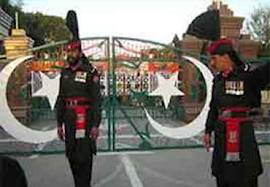
(Credit: timesofindia.com)
A devoted American social worker has been stabbed to death by her Indian husband of five months – who then returned to their home and blew himself up.
Erin Willinger, 35, a yoga teacher and psychologist from New York, was found dumped in a bush with multiple stab wounds to her face and body in the city of Agra on Thursday night, according to Indian news reports.
Her husband, 32-year-old Bunty Sharma, returned to their home, where he is believed to have ignited cooking gas, causing a massive explosion that killed him.
The tragedy comes just months after the couple met and married – but accused each other of lying about previous marriages, while Willinger also accused her new husband of infidelity.
Willinger had visited Agra – which is about 120 miles south of New Delhi – with a group of Americans in July and chose to stay after telling the Indo-Asian News Service she wanted to help make the city worthy of ‘such a beautiful monument as the Taj Mahal’.
But within weeks, their marriage began to crumble and by December, they started living separately.
Both accused the other of hiding previous marriages and Willinger, who went by the alias Kiran Sharma and also uses the name Erin White, accused her new husband of greed, infidelity and cruelty, the Hindustan Times reported.
White approached the Agra Police’s Mediation Cell for Family Matters in January, asking for help and the couple was put in touch with a counselor, who encouraged them to start living together again.
But the arguments continued and on Thursday evening, Bunty reportedly drove Willinger to a quieter section of the city and stabbed her to death in his taxi cab.
He then shoved her body in bushes along the road, the Hindustan Times reported.
He then returned home and locked himself in his room on the second floor.
Local residents then said they heard a loud explosion and saw flames erupting from the room. When they rushed inside to rescue him, they found his charred body on the floor.
Authorities believe Bunty sparked the blast by igniting gas he had released from a cooking gas cylinder in the apartment.
The union home ministry and the American embassy in New Delhi have been informed.
A State Department official confirmed Willinger’s death.
‘We offer our condolences to her family and loved ones on their loss,’ the official told MailOnline.
‘We are in contact with her family and are providing all appropriate consular assistance. Out of respect for the privacy of those affected, we decline further comment.’
Before her death, Willinger had revealed that she was deeply in love with Indian culture and wanted to improve civic conditions in Agra.
On the day she was killed, she addressed a press conference to promote her campaign ‘Agra Sunder Hai’, and several local NGOs pledged support to her.
She had said she hoped to help Agra with improving its water, plastic waste and garbage disposal.
She said that she wanted to stay in Agra until ’60 or maybe more – as long as the body permits’.
‘This city needs a push,’ she said. ‘The city is dirty and no one wants to stay back here for a night. You have to teach people to be conscious of hygiene, health and sensibilities of others. You have to build trust and reach out.’
She spoke of taking money from the rich to give resources to the poor, and said she hoped to get actors and other celebrities on board to help make programs more attractive.
And she was confident that her idea was going to be a success.
‘I am talking with so many [students, businessmen and professionals] and they all agree that the time for change has indeed come,’ she said.
‘You need role models. A democratic society needs inspiring heroes to move ahead. You need success stories to diffuse the clouds of negativity all around.



















